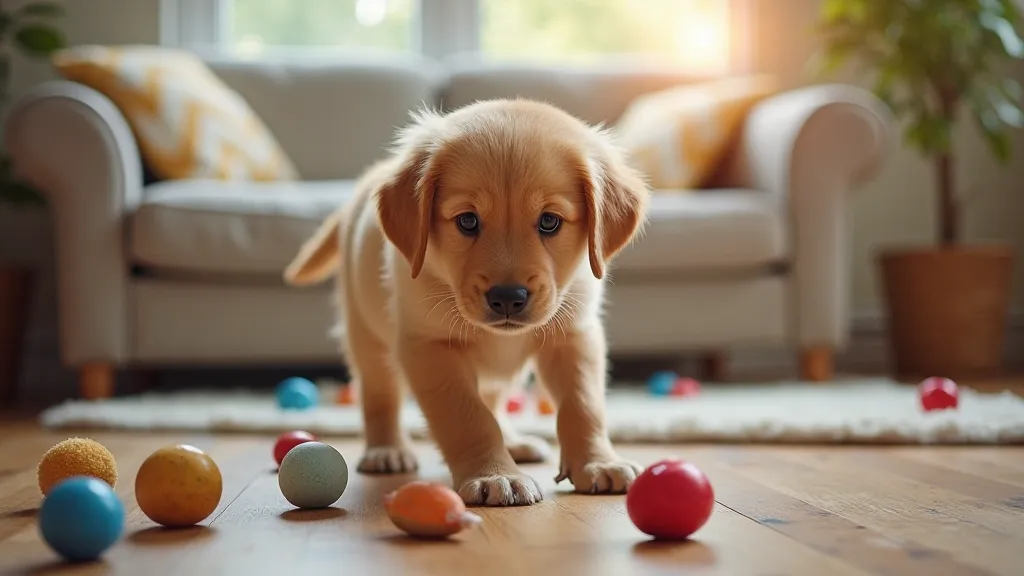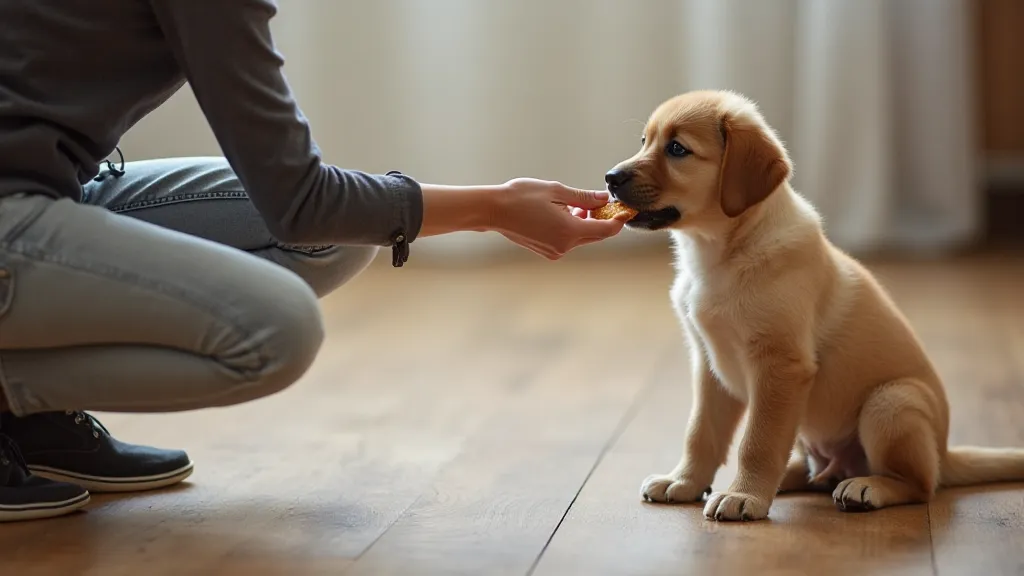The Ultimate Guide to Puppy Training: From Potty Breaks to Basic Commands
Bringing a new puppy home is an exciting time! But it also comes with challenges. This comprehensive guide covers essential puppy training techniques, including housebreaking, crate training, socialization, and teaching basic commands like sit, stay, and come. We're breaking down each step with easy-to-follow instructions and addressing common puppy problems, ensuring a positive training experience for both you and your pup. Our focus is on positive reinforcement and creating a strong foundation for a well-behaved dog.
Setting the Stage for Success: Preparation & Early Days
Before your puppy even arrives, it's crucial to prepare your home and yourself. Puppy-proof your space by removing hazards like electrical cords, toxic plants, and small objects they could swallow. Gather essential supplies: food and water bowls, a comfortable bed, toys, a leash, and cleaning supplies for accidents. Understanding your puppy's breed can also give you valuable insights into their temperament and training needs - you might find the Breed Profile: The Energetic and Loyal Labrador Retriever helpful if you’re welcoming a Labrador or similar breed.
The first few days are about settling in. Allow your puppy to explore their new surroundings at their own pace. Avoid overwhelming them with too much attention or visitors immediately. Establish a routine as quickly as possible, including feeding times, potty breaks, and playtime. Consistency is key!

Housebreaking: Potty Training Your Puppy
Housebreaking is often the biggest challenge for new puppy owners. Here's a breakdown:
- Establish a Routine: Take your puppy out frequently, especially first thing in the morning, after meals, after naps, and before bedtime.
- Designated Potty Spot: Choose a specific spot in your yard for your puppy to relieve themselves.
- Positive Reinforcement: When your puppy eliminates outside, praise them enthusiastically and offer a small treat.
- Accidents Happen: Don't punish your puppy for accidents inside. Clean them up thoroughly with an enzymatic cleaner to eliminate odors and discourage repeat offenses.
- Crate Training Aid: A crate can be a valuable tool for housebreaking. Puppies generally won't soil their sleeping area.
Crate Training: Creating a Safe and Comfortable Space
Crate training offers numerous benefits: it provides a safe haven for your puppy, aids in housebreaking, and prevents destructive behavior when you're not home. It’s also a great place for your puppy to rest and feel secure – ensuring they’ll have a happy and healthy coat is just as important, and you can find helpful tips in Dog Grooming 101: Essential Tips for a Happy, Healthy Coat. This comprehensive guide covers everything from brushing techniques to choosing the right grooming tools. Remember that regular grooming isn’t just about aesthetics; it contributes significantly to your dog's overall health and well-being.
- Introduce the Crate Positively: Never use the crate as punishment.
- Make it Cozy: Line the crate with a comfortable bed and toys.
- Short Periods Initially: Start with short crate sessions and gradually increase the duration.
- Feed Meals in the Crate: This creates a positive association with the crate.
- Never Force Entry: Let your puppy enter the crate on their own.

Socialization: Exposing Your Puppy to the World
Socialization is crucial for developing a well-adjusted dog. Expose your puppy to a variety of sights, sounds, people, and other animals during their critical socialization period (roughly 3-16 weeks of age). This process is about more than just exposure – it’s about ensuring that interactions are positive and create a dog that is well-behaved and a joy to be around. A well-socialized dog is less likely to exhibit fear-based aggression and will generally be more comfortable in a variety of environments. Furthermore, learning about Responsible Pet Ownership: A Guide to Ethical Dog Care provides important context for understanding the lifelong commitment and responsibilities that come with bringing a dog into your family.
- Controlled Exposure: Ensure that interactions are positive and non-threatening.
- Puppy Classes: A great way to socialize your puppy in a safe and supervised environment.
- Introduce Gradually: Start with brief exposures and gradually increase the duration.
- Monitor Body Language: Pay attention to your puppy’s body language and remove them from situations that are causing stress.
Basic Commands: Sit, Stay, Come
Teaching basic commands not only enhances obedience but also strengthens the bond between you and your puppy. It's about building trust and communication, and these commands are the foundation for a lifetime of good behavior. Mastering these basic commands lays the groundwork for more advanced training and helps ensure your dog is a joy to have around. Consistent training and positive reinforcement are key to success. For more detailed insights into understanding what your dog is trying to communicate, you might find Decoding Dog Body Language: Understanding What Your Dog is Trying to Tell You incredibly helpful.
- Start Simple: Begin with short, focused training sessions (5-10 minutes).
- Positive Reinforcement: Use treats, praise, and toys to reward desired behaviors.
- "Sit": Hold a treat in front of your puppy’s nose and lure them into a sitting position. Say "Sit" as they lower their rear. Reward immediately.
- "Stay": Start with short "Stay" durations and gradually increase the time.
- "Come": Use a cheerful tone and enthusiastic praise when your puppy comes when called.

Troubleshooting Common Puppy Problems
Dealing with puppy problems is part of the journey. Biting, chewing, and separation anxiety are common. Consistency, patience, and positive reinforcement are your best tools for addressing these challenges. Early intervention is key to preventing these behaviors from becoming ingrained habits. Remember that bringing a pet into your life is a significant responsibility, and Responsible Pet Ownership: A Guide to Ethical Dog Care provides valuable insights into the long-term commitment involved. It's about more than just providing food and shelter; it’s about meeting your dog’s physical, emotional, and social needs throughout their life. If problems persist, consult with a professional dog trainer or veterinarian.
Beyond the practical aspects of training, consider the emotional and psychological well-being of your puppy. Early socialization and consistent positive reinforcement are key to fostering a well-adjusted and happy dog. It's a journey that requires dedication, patience, and a genuine love for your furry companion. Understanding your dog's body language can also help you anticipate and prevent potential problems, allowing you to build a stronger and more harmonious relationship. Many owners find that learning to interpret subtle cues helps them respond appropriately and strengthens the bond with their pup.
Remember, puppy training takes time and dedication. Enjoy the process and celebrate the small victories along the way! Be prepared for occasional setbacks – they're a normal part of the learning process. With consistent effort and a positive attitude, you can raise a well-behaved and happy dog who will bring years of joy to your family.





